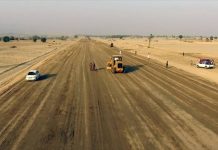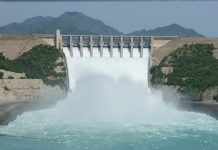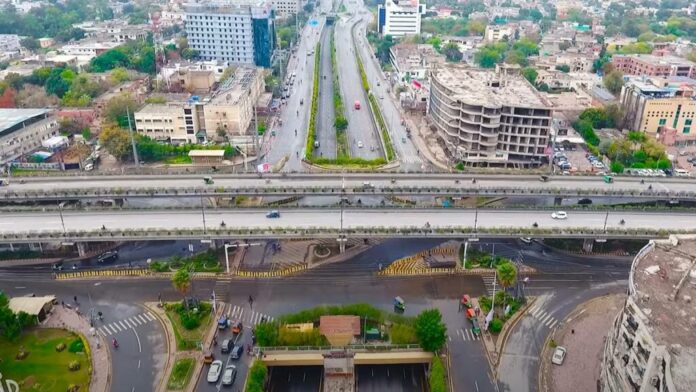LAHORE: If you drive across Lahore’s Kalma Chowk today, chances are you’ll have to take a massive detour to reach your destination. Kalma Chowk standing at the intersection of Lahore’s busiest roads- Ferozepur Road, Main Boulevard Garden Town and Main Boulevard Gulberg is being drastically restructured.
Not only has this been disruptive for daily commuters, the project is also costing taxpayers Rs 5 billion — which makes us question: is the project worth the cost, and why is it being undertaken?
For starters, the project is not even meant to improve Lahore’s traffic congestion. It is part and parcel of an effort to improve access to Lahore’s Central Business District (CBD). The CBD project is a major undertaking of the Punjab Government billed to utilise government owned land for urban regeneration. The government claims that the efforts of the district will attract investors to the area and boost economic development in the province.
Yet there is more than meets the eye when it comes to the CBD and its projects, including the extension of the Kalma Chowk extension project. Environmental experts and urban researchers say that the infrastructural development is not meant for public interest and incurs a huge environmental cost in addition to the massive Rs 5 billion development bill.
Punjab Central Business District Development Authority (PCBDDA)
The CBD was launched by the Punjab Government last year to develop commercial real-estate in Punjab. The ethos behind the project was to use unused government land to develop a district within Lahore where commercial and residential real estate projects could be developed.
A major avenue for the project has been the dead-centre of Lahore, where the CBD wants to knock down the old Walton Airport (the area located between the entrance towards Model Town and the Falcon Enclave) and hand it over to real estate developers to make both commercial and residential high-rise real estate.
The problem for the CBD was, however, that the area in which they were developing this real estate is land-locked. That is why in November this year, the CBD initiated the extension of the Kalma Chown underpass. The project constitutes two parts: the construction of the CBD Punjab Boulevard and the remodelling of Kalma Chowk Underpass. With a 10-month timeline for completion, the contract has been given to Habib Constructions Services — a construction conglomerate that has been involved most notably in the recent construction of Lahore’s Ring Road.
The CBD claims that better access will be vital to invite more investors to put their money in the CBD project. While the concept behind high-rise real estate development is important, particularly in a city like Lahore with a massive urban sprawl problem, it is worth looking at what exactly the CBD is doing, and how it will impact Lahore.
Who will the project actually benefit?
“The underpass serves primarily to facilitate the business district, by providing car access to landlocked property. Such infrastructure only benefits motor transport, that includes both cars and motorcycles”, says Raffay Alam, Pakistan’s leading environmental lawyer. “Only 8% of Lahore’s residents own cars, which exposes the classist nature of this project. Secondly, a very miniscule percentage of car owners are women and older residents, which means that it only improves the mobility of the already most privileged demographic- elite men.”
The building of extravagant underpasses and overpasses is already a double-edged sword in urban planning. Money that could be spent on improving public transporta is spent on widening roads to help traffic congestion. However in the case of Kalma Chowk’s extension, the purpose is less to improve traffic congestion and more to provide access to a glorified real estate project — the CBD.
“The remodelling of Kalma Chowk Underpass has largely been proposed and implemented for the Central Business District. The project was planned for the former area of the Walton airport and plots were auctioned earlier this year. Part of the CBD’s plan was to provide direct access to major arteries such as Ferozepur Road and Main Boulevard,” says Dr Umair Javed, assistant professor of Politics and Sociology at LUMS. “Essentially, the value of plots auctioned is contingent on providing this particular access which means that the project is designed to benefit a very few people- primarily investors who have purchased these plots.”
According to Mr. Arif Hasan, a leading architect, planner and social researcher, design and development in Pakistan had been hijacked by property developers and people with automobiles.There’s clearly no large-scale public benefit attached to it, which shows the misplaced priorities of municipal authorities in provincial governments: they are willing to spend Rs 5 billion on a project that benefits a very limited set of residents.
There are many ways to make better use of Rs 5 billion. How could we make better use of Rs 5 billion? Ideally, there should be greater investment in public transportation. This would be of a greater benefit to the residents of Lahore, especially given the smog and the role of private transport in creating this crisis. However, public transport seems to be nowhere on the agenda of this particular government. In fact, no major investment in public transport has occurred over the last three years, which shows that the present infrastructural development has very little to do with concerns of the city’s residents. Indeed, construction dust is a main pollutant in Lahore.
“While the city was enveloped in haze 3-4 weeks ago, the remodelling of the Kalma Chowk Underpass began. Delhi was also severely beset with haze at the same time. However, the Delhi administration immediately halted such ongoing projects. The timing of the project therefore also flies in the face of it being a means of public good,” adds Dr Alam.
The route
The project’s construction begins from the Kalma Chowk underpass, separates it from the first underpass access towards the Lahore Central Business District, and then opens to another underpass, as it turns towards Firdaus Market (Ali Zeb Road) from Centre Point. The first underpass measuring 632 metres will have two barrels and a 5.1 metres vertical clearance. The second underpass from Barkat Market to CBD area at Walton will be of 285 metres and have two barrels (each of 35 feet width and 17 feet vertical clearance).
The project will ultimately offer signal-free access to motorists from the CBD project area (including Ali Zeb Road and Walton) towards Firdaus Market and finally to Cavalry Ground through Lal Shahbaz Qalandar underpass.This means that if you were to drive through Gulberg main boulevard, you will find no signals from Centre Point till Siddique Trade Centre, and then from Jail Road till Mozang/Qartaba Chowk.
The Construction Phases
The technical team of the PCBDDA met with the Lahore Traffic Police to finalise traffic diversion plans during the remodelling of the Kalma Chowk underpass and the construction of the CBD Boulevard. The PCBDDA’s Executive Director (technical) Mr Riaz Hussain, Director Project Management Mr Asif Iqbal, Lahore Traffic Police SP Mr Asif Sadiq, DSPs Muneer Hashmi, Rashid Hayat, Azam Chohan and Akhlaq Ahmed attended the meeting. According to the PCBDDA team, during the first phase of construction, one side of the main boulevard would be open to incoming traffic from Barkat Market towards Liberty Market. If you were to drive from Firdaus Market (Ali Zeb Road) towards Barkat Market and Ferozepur Road, you will find the service lane operational. The traffic coming from Model Town towards Liberty would be diverted from Gaddafi Stadium. The plan further entailed a clear passage for residents of Falcon Society. The project is intended as an “amenity” for Lahore’s residents with the authority’s guarantees of safe, comfortable and hassle-free routes for commuters during the phases’ construction.
























